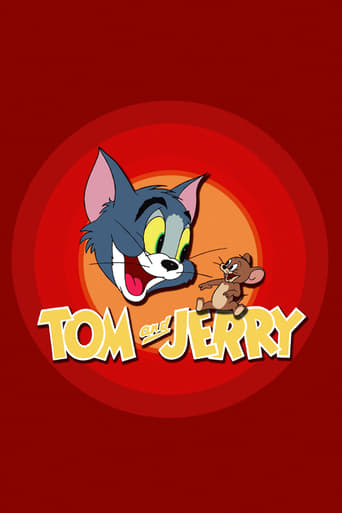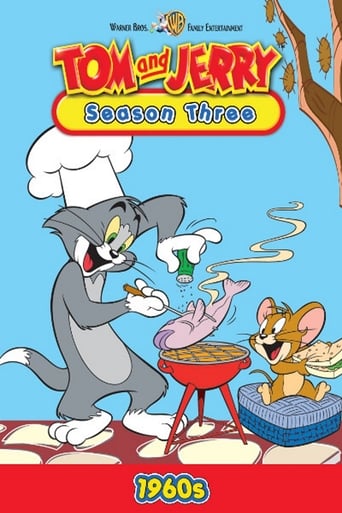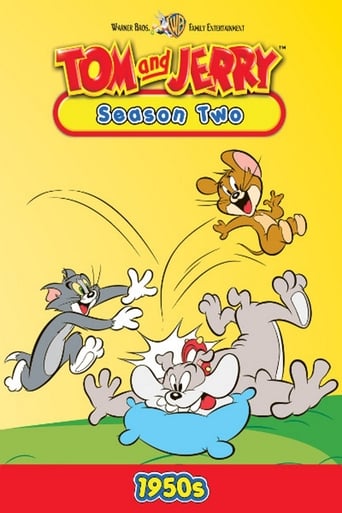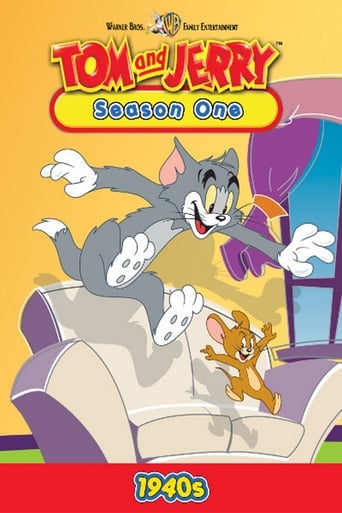Trailer
Synopsis
Tom and Jerry is a series of theatrical animated cartoon films created by William Hanna and Joseph Barbera for Metro-Goldwyn-Mayer, centering on a rivalry between a cat and a mouse whose chases include slapstick comedy.
Episode 46 : Tennis Chumps
December. 10,1949

Tennis Chumps is a 1949 one-reel animated cartoon and is the 46th Tom and Jerry short released by Metro-Goldwyn-Mayer, directed by William Hanna and Joseph Barbera, and produced by Fred Quimby. The cartoon's music was scored by Scott Bradley, and the footage was animated by Ray Patterson, Irven Spence, Ed Barge and Kenneth Muse. It is the last cartoon to be produced in the 1940s.
Episode 46 : Tennis Chumps
December. 10,1949

Tennis Chumps is a 1949 one-reel animated cartoon and is the 46th Tom and Jerry short released by Metro-Goldwyn-Mayer, directed by William Hanna and Joseph Barbera, and produced by Fred Quimby. The cartoon's music was scored by Scott Bradley, and the footage was animated by Ray Patterson, Irven Spence, Ed Barge and Kenneth Muse. It is the last cartoon to be produced in the 1940s.
Episode 45 : Jerry's Diary
October. 22,1949

Jerry's Diary is a 1949 one-reel animated cartoon and is the 45th Tom and Jerry short released by Metro-Goldwyn-Mayer, directed by William Hanna and Joseph Barbera, produced by Fred Quimby, scored by Scott Bradley, and animated by Kenneth Muse and Ed Barge. It is the first of several wrap-around T&J shorts, integrating footage from previous shorts into the plot.
Episode 45 : Jerry's Diary
October. 22,1949

Jerry's Diary is a 1949 one-reel animated cartoon and is the 45th Tom and Jerry short released by Metro-Goldwyn-Mayer, directed by William Hanna and Joseph Barbera, produced by Fred Quimby, scored by Scott Bradley, and animated by Kenneth Muse and Ed Barge. It is the first of several wrap-around T&J shorts, integrating footage from previous shorts into the plot.
Episode 44 : Love That Pup
October. 01,1949

Love That Pup is a 1949 one-reel animated cartoon and is the 44th Tom and Jerry short released by Metro-Goldwyn-Mayer, directed by William Hanna and Joseph Barbera, produced by Fred Quimby, music scored by Scott Bradley, and animated by Ed Barge, Ray Patterson, Irven Spence and Kenneth Muse.
Episode 44 : Love That Pup
October. 01,1949

Love That Pup is a 1949 one-reel animated cartoon and is the 44th Tom and Jerry short released by Metro-Goldwyn-Mayer, directed by William Hanna and Joseph Barbera, produced by Fred Quimby, music scored by Scott Bradley, and animated by Ed Barge, Ray Patterson, Irven Spence and Kenneth Muse.
Episode 43 : The Cat and the Mermouse
September. 03,1949
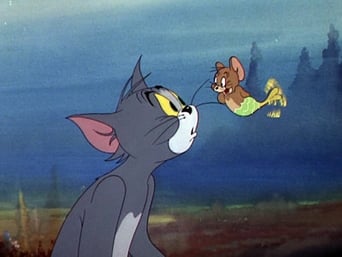
The Cat and the Mermouse is a 1949 American one-reel animated cartoon and is the 43rd Tom and Jerry short directed by William Hanna and Joseph Barbera and produced by Fred Quimby. It was animated by Kenneth Muse, Ed Barge, Ray Patterson, Irven Spence and Al Grandmain, scored by Scott Bradley, and released on September 3, 1949.
Episode 43 : The Cat and the Mermouse
September. 03,1949

The Cat and the Mermouse is a 1949 American one-reel animated cartoon and is the 43rd Tom and Jerry short directed by William Hanna and Joseph Barbera and produced by Fred Quimby. It was animated by Kenneth Muse, Ed Barge, Ray Patterson, Irven Spence and Al Grandmain, scored by Scott Bradley, and released on September 3, 1949.
Episode 42 : Heavenly Puss
July. 09,1949
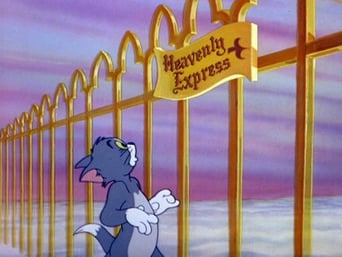
Heavenly Puss is a 1949 one-reel animated cartoon and is the 42nd Tom and Jerry short, created in 1948, and released on 9 July 1949. It was directed by William Hanna and Joseph Barbera, and produced by Fred Quimby. The cartoon's music was composed by Scott Bradley and the animation was credited to Ray Patterson, Irven Spence, Kenneth Muse and Ed Barge.
Episode 42 : Heavenly Puss
July. 09,1949

Heavenly Puss is a 1949 one-reel animated cartoon and is the 42nd Tom and Jerry short, created in 1948, and released on 9 July 1949. It was directed by William Hanna and Joseph Barbera, and produced by Fred Quimby. The cartoon's music was composed by Scott Bradley and the animation was credited to Ray Patterson, Irven Spence, Kenneth Muse and Ed Barge.
Episode 41 : Hatch Up Your Troubles
May. 14,1949

Hatch Up Your Troubles is a 1949 one-reel animated cartoon made in 1948 and is the 41st Tom and Jerry short produced by Fred Quimby and directed by William Hanna and Joseph Barbera, with musical supervision by Scott Bradley and animation by Ed Barge, Ray Patterson, Irven Spence and Kenneth Muse. The cartoon was produced in Technicolor and released to theatres on May 14, 1949 by Metro-Goldwyn Mayer. In 1955, the cartoon was remade and then rereleased in CinemaScope, titled "The Egg and Jerry".
Episode 41 : Hatch Up Your Troubles
May. 14,1949

Hatch Up Your Troubles is a 1949 one-reel animated cartoon made in 1948 and is the 41st Tom and Jerry short produced by Fred Quimby and directed by William Hanna and Joseph Barbera, with musical supervision by Scott Bradley and animation by Ed Barge, Ray Patterson, Irven Spence and Kenneth Muse. The cartoon was produced in Technicolor and released to theatres on May 14, 1949 by Metro-Goldwyn Mayer. In 1955, the cartoon was remade and then rereleased in CinemaScope, titled "The Egg and Jerry".
Episode 40 : The Little Orphan
April. 30,1949

The Little Orphan is a 1949 American one-reel animated cartoon and is the 40th Tom and Jerry short, released in theatres on April 30, 1949 by Metro-Goldwyn Mayer. It was produced by Fred Quimby and directed by William Hanna and Joseph Barbera, with music by Scott Bradley. The cartoon was animated by Irven Spence, Kenneth Muse, Ed Barge and Ray Patterson.
The Little Orphan won the 1948 Academy Award for Best Short Subject: Cartoons, this being the fifth Oscar given to the cat and mouse team. Though the cartoon was released in 1949, it won its Oscar the previous year. This may have been because it was given a short run at a cinema in 1948 to qualify it for that year's Academy Award.
Episode 40 : The Little Orphan
April. 30,1949

The Little Orphan is a 1949 American one-reel animated cartoon and is the 40th Tom and Jerry short, released in theatres on April 30, 1949 by Metro-Goldwyn Mayer. It was produced by Fred Quimby and directed by William Hanna and Joseph Barbera, with music by Scott Bradley. The cartoon was animated by Irven Spence, Kenneth Muse, Ed Barge and Ray Patterson.
The Little Orphan won the 1948 Academy Award for Best Short Subject: Cartoons, this being the fifth Oscar given to the cat and mouse team. Though the cartoon was released in 1949, it won its Oscar the previous year. This may have been because it was given a short run at a cinema in 1948 to qualify it for that year's Academy Award.
Episode 39 : Polka-Dot Puss
February. 26,1949

Polka-Dot Puss is a 1949 one-reel animated cartoon and is the 39th Tom and Jerry short produced in 1948 and released on February 26, 1949. The short was directed by Tom and Jerry's creators, William Hanna and Joseph Barbera, produced by Fred Quimby, animated by Kenneth Muse, Ed Barge, Ray Patterson and Irven Spence, and scored by Scott Bradley, who here did an early version of the duo's recognizable iconic theme tune that would continue to be used in their cartoons throughout the 50's and 60's.
Episode 39 : Polka-Dot Puss
February. 26,1949

Polka-Dot Puss is a 1949 one-reel animated cartoon and is the 39th Tom and Jerry short produced in 1948 and released on February 26, 1949. The short was directed by Tom and Jerry's creators, William Hanna and Joseph Barbera, produced by Fred Quimby, animated by Kenneth Muse, Ed Barge, Ray Patterson and Irven Spence, and scored by Scott Bradley, who here did an early version of the duo's recognizable iconic theme tune that would continue to be used in their cartoons throughout the 50's and 60's.
Episode 38 : Mouse Cleaning
December. 11,1948

Mouse Cleaning is a 1948 one-reel animated cartoon and is the 38th Tom and Jerry short. The title is a play on "house cleaning". It was produced in Technicolor and released to theatres on December 11, 1948 by Metro-Goldwyn Mayer. It was animated by Ray Patterson, Irven Spence, Kenneth Muse and Ed Barge, who were the usual animators for the Tom and Jerry cartoons in the early 1940s up until the late 1950s. As per most Tom and Jerry cartoons, it was directed by William Hanna and Joseph Barbera, and produced by Fred Quimby; no writer is credited. The music was scored by Scott Bradley and the backgrounds were by Robert Gentle.
Episode 38 : Mouse Cleaning
December. 11,1948

Mouse Cleaning is a 1948 one-reel animated cartoon and is the 38th Tom and Jerry short. The title is a play on "house cleaning". It was produced in Technicolor and released to theatres on December 11, 1948 by Metro-Goldwyn Mayer. It was animated by Ray Patterson, Irven Spence, Kenneth Muse and Ed Barge, who were the usual animators for the Tom and Jerry cartoons in the early 1940s up until the late 1950s. As per most Tom and Jerry cartoons, it was directed by William Hanna and Joseph Barbera, and produced by Fred Quimby; no writer is credited. The music was scored by Scott Bradley and the backgrounds were by Robert Gentle.
Episode 37 : Professor Tom
October. 30,1948
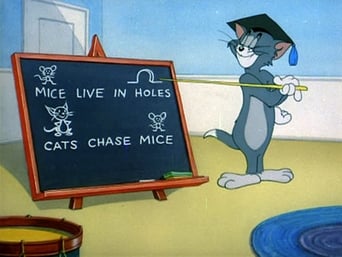
Professor Tom is a 1948 one-reel animated cartoon and is the 37th Tom and Jerry short, directed by the duo's creators William Hanna and Joseph Barbera, produced by Fred Quimby, and animated by Ray Patterson, Irven Spence, Kenneth Muse and Ed Barge.
Episode 37 : Professor Tom
October. 30,1948

Professor Tom is a 1948 one-reel animated cartoon and is the 37th Tom and Jerry short, directed by the duo's creators William Hanna and Joseph Barbera, produced by Fred Quimby, and animated by Ray Patterson, Irven Spence, Kenneth Muse and Ed Barge.
Episode 36 : Old Rockin' Chair Tom
September. 18,1948

Old Rockin' Chair Tom is a 1948 American one-reel animated cartoon and is the 36th Tom and Jerry short directed by William Hanna and Joseph Barbera and produced by Fred Quimby. It was animated by Ed Barge, Kenneth Muse, Ray Patterson and Irven Spence and was released to theaters on September 18, 1948. This cartoon has the longest Mammy Two Shoes on screen appearance. It even features the first appearance of Lightning in a theatrical release of a Tom and Jerry cartoon.
Episode 36 : Old Rockin' Chair Tom
September. 18,1948

Old Rockin' Chair Tom is a 1948 American one-reel animated cartoon and is the 36th Tom and Jerry short directed by William Hanna and Joseph Barbera and produced by Fred Quimby. It was animated by Ed Barge, Kenneth Muse, Ray Patterson and Irven Spence and was released to theaters on September 18, 1948. This cartoon has the longest Mammy Two Shoes on screen appearance. It even features the first appearance of Lightning in a theatrical release of a Tom and Jerry cartoon.
Episode 35 : The Truce Hurts
July. 17,1948

The Truce Hurts is a 1947 one-reel animated cartoon and is the 35th Tom and Jerry short. It was produced in Technicolor and released to theatres on July 17, 1948 by Metro-Goldwyn Mayer. The title is a pun on the phrase "the truth hurts".
Episode 35 : The Truce Hurts
July. 17,1948

The Truce Hurts is a 1947 one-reel animated cartoon and is the 35th Tom and Jerry short. It was produced in Technicolor and released to theatres on July 17, 1948 by Metro-Goldwyn Mayer. The title is a pun on the phrase "the truth hurts".
Episode 34 : Kitty Foiled
June. 01,1948

Kitty Foiled is a 1948 one-reel animated cartoon and is the 34th Tom and Jerry short. It was released in theaters on June 1, 1948. The cartoon was directed by William Hanna and Joseph Barbera, with animation by Irven Spence, Kenneth Muse, Irving Levine and Ed Barge. The music was scored by Scott Bradley, and the cartoon produced by Fred Quimby.
Episode 34 : Kitty Foiled
June. 01,1948

Kitty Foiled is a 1948 one-reel animated cartoon and is the 34th Tom and Jerry short. It was released in theaters on June 1, 1948. The cartoon was directed by William Hanna and Joseph Barbera, with animation by Irven Spence, Kenneth Muse, Irving Levine and Ed Barge. The music was scored by Scott Bradley, and the cartoon produced by Fred Quimby.
Episode 33 : The Invisible Mouse
September. 27,1947

The Invisible Mouse is a 1947 American one-reel animated cartoon and is the 33rd Tom and Jerry short directed by William Hanna and Joseph Barbera and produced by Fred Quimby. It was released on September 27, 1947.
Episode 33 : The Invisible Mouse
September. 27,1947

The Invisible Mouse is a 1947 American one-reel animated cartoon and is the 33rd Tom and Jerry short directed by William Hanna and Joseph Barbera and produced by Fred Quimby. It was released on September 27, 1947.
Episode 32 : A Mouse in the House
August. 30,1947

A Mouse in the House is a 1947 one-reel animated cartoon and is the 32nd Tom and Jerry short directed by William Hanna and Joseph Barbera and produced by Fred Quimby. It was animated by Kenneth Muse, Ed Barge, Richard Bickenbach, Don Patterson and Michael Lah, and was released to theatres on August 30, 1947. The title of this cartoon is an appropriate play on "a guest in the house."
Episode 32 : A Mouse in the House
August. 30,1947

A Mouse in the House is a 1947 one-reel animated cartoon and is the 32nd Tom and Jerry short directed by William Hanna and Joseph Barbera and produced by Fred Quimby. It was animated by Kenneth Muse, Ed Barge, Richard Bickenbach, Don Patterson and Michael Lah, and was released to theatres on August 30, 1947. The title of this cartoon is an appropriate play on "a guest in the house."
Episode 31 : Salt Water Tabby
July. 12,1947

Salt Water Tabby is a 1947 one-reel animated cartoon and is the 31st Tom and Jerry short. It was produced in Technicolor and released to theatres on July 12, 1947 by Metro-Goldwyn Mayer. The cartoon was animated by Ed Barge, Michael Lah and Kenneth Muse, with uncredited animation by Ray Patterson. Salt Water Tabby was scored by Scott Bradley, produced by Fred Quimby, and directed and written by William Hanna and Joseph Barbera. The cartoon's title is a pun on salt water taffy, a type of candy, and the common tabby cat.
Episode 31 : Salt Water Tabby
July. 12,1947

Salt Water Tabby is a 1947 one-reel animated cartoon and is the 31st Tom and Jerry short. It was produced in Technicolor and released to theatres on July 12, 1947 by Metro-Goldwyn Mayer. The cartoon was animated by Ed Barge, Michael Lah and Kenneth Muse, with uncredited animation by Ray Patterson. Salt Water Tabby was scored by Scott Bradley, produced by Fred Quimby, and directed and written by William Hanna and Joseph Barbera. The cartoon's title is a pun on salt water taffy, a type of candy, and the common tabby cat.
Episode 30 : Dr. Jekyll and Mr. Mouse
June. 12,1947

Dr. Jekyll and Mr. Mouse is a 1947 American one-reel animated cartoon and is the 30th Tom and Jerry short. The cartoon was released on 14 June 1947, and was directed by William Hanna and Joseph Barbera, produced by Fred Quimby and animated by Ed Barge, Michael Lah, Kenneth Muse and Al Grandmain. The episode is a parody of Dr. Jekyll and Mr. Hyde. It was nominated for the Academy Award for Best Short Subject: Cartoons in 1947, but lost to Warner Bros. Tweetie Pie, ending their streak of 4 consecutive wins.
Episode 30 : Dr. Jekyll and Mr. Mouse
June. 14,1947

Dr. Jekyll and Mr. Mouse is a 1947 American one-reel animated cartoon and is the 30th Tom and Jerry short. The cartoon was released on 14 June 1947, and was directed by William Hanna and Joseph Barbera, produced by Fred Quimby and animated by Ed Barge, Michael Lah, Kenneth Muse and Al Grandmain. The episode is a parody of Dr. Jekyll and Mr. Hyde. It was nominated for the Academy Award for Best Short Subject: Cartoons in 1947, but lost to Warner Bros. Tweetie Pie, ending their streak of 4 consecutive wins.
Episode 29 : The Cat Concerto
April. 26,1947

The Cat Concerto is a 1947 American one-reel animated cartoon and is the 29th Tom and Jerry short, produced in 1946 and released to theatres on April 26, 1947 and reissued for a re-release in 1955 by Metro-Goldwyn Mayer. It was produced by Fred Quimby and directed by William Hanna and Joseph Barbera, with musical supervision by Scott Bradley, and animation by Kenneth Muse, Ed Barge and Irven Spence. It won the 1946 Academy Award for Best Short Subject: Cartoons. In 1994 it was voted #42 of the 50 Greatest Cartoons of all time by members of the animation field. The short won the duo their fourth consecutive Academy Award for Best Animated Short Film.
Episode 29 : The Cat Concerto
April. 26,1947

The Cat Concerto is a 1947 American one-reel animated cartoon and is the 29th Tom and Jerry short, produced in 1946 and released to theatres on April 26, 1947 and reissued for a re-release in 1955 by Metro-Goldwyn Mayer. It was produced by Fred Quimby and directed by William Hanna and Joseph Barbera, with musical supervision by Scott Bradley, and animation by Kenneth Muse, Ed Barge and Irven Spence. It won the 1946 Academy Award for Best Short Subject: Cartoons. In 1994 it was voted #42 of the 50 Greatest Cartoons of all time by members of the animation field. The short won the duo their fourth consecutive Academy Award for Best Animated Short Film.
Episode 28 : Part Time Pal
March. 15,1947

Part Time Pal is a 1947 American one-reel animated cartoon and is the 28th Tom and Jerry short. It was animated by Michael Lah, Kenneth Muse, Ed Barge, Pete Burness and Ray Patterson, produced in Technicolor by Fred Quimby, directed by William Hanna and Joseph Barbera, and released to theaters on March 15, 1947 by Metro-Goldwyn Mayer. Pete Burness animated around 50% of the animation in this cartoon, but he didn't receive any credit because he left the studio shortly after this cartoon was made.
Episode 28 : Part Time Pal
March. 15,1947

Part Time Pal is a 1947 American one-reel animated cartoon and is the 28th Tom and Jerry short. It was animated by Michael Lah, Kenneth Muse, Ed Barge, Pete Burness and Ray Patterson, produced in Technicolor by Fred Quimby, directed by William Hanna and Joseph Barbera, and released to theaters on March 15, 1947 by Metro-Goldwyn Mayer. Pete Burness animated around 50% of the animation in this cartoon, but he didn't receive any credit because he left the studio shortly after this cartoon was made.
Episode 27 : Cat Fishin'
February. 22,1947

Cat Fishin' is a 1947 American one-reel animated cartoon and is the 27th Tom and Jerry short directed by William Hanna and Joseph Barbera, produced by Fred Quimby and animated by Kenneth Muse, Ed Barge, Michael Lah, Pete Burness and Ray Patterson. It was released to theatres on February 22, 1947 by Metro-Goldwyn Mayer.
Episode 27 : Cat Fishin'
February. 22,1947

Cat Fishin' is a 1947 American one-reel animated cartoon and is the 27th Tom and Jerry short directed by William Hanna and Joseph Barbera, produced by Fred Quimby and animated by Kenneth Muse, Ed Barge, Michael Lah, Pete Burness and Ray Patterson. It was released to theatres on February 22, 1947 by Metro-Goldwyn Mayer.
Episode 26 : Solid Serenade
August. 31,1946
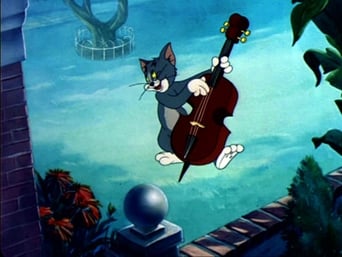
Solid Serenade is a 1946 one-reel animated cartoon and is the 26th Tom and Jerry short, produced in Technicolor and released to theatres on August 31, 1946 by Metro-Goldwyn Mayer. It was produced by Fred Quimby and directed by William Hanna and Joseph Barbera, with musical supervision by Scott Bradley, and animation by Ed Barge, Michael Lah and Kenneth Muse, with uncredited animation by Pete Burness and Ray Patterson.
Plot: Near a house is a doghouse labeled "Killer" with a dog in it. Tom pokes his head over the wall and spots a female cat in the window. Tom brings along his double bass, then wakes up Spike and neutralizes him by whacking him in the head with a mallet and tying him up. Tom uses his bass as a pogo stick to hop over to the window, stopping halfway to taunt Spike along the way.
Tom plays "Is You Is or Is You Ain't My Baby"; the sound waves from the instrument shake Jerry's mousehole, bouncing Jerry off the bed, then under the table, and Jerry's head is hit by a vase that falls off the table when the mouse comes out the other side. Having had enough, the mouse gets his revenge by going into the kitchen and hurling a pie with an iron stuffed inside; the cat is angered, but continues with a few more bars. Seconds later, he is hit in the face again – this time with a pie covered in whipped cream. Spotting Jerry, Tom chases him through the house.
Episode 26 : Solid Serenade
August. 31,1946

Solid Serenade is a 1946 one-reel animated cartoon and is the 26th Tom and Jerry short, produced in Technicolor and released to theatres on August 31, 1946 by Metro-Goldwyn Mayer. It was produced by Fred Quimby and directed by William Hanna and Joseph Barbera, with musical supervision by Scott Bradley, and animation by Ed Barge, Michael Lah and Kenneth Muse, with uncredited animation by Pete Burness and Ray Patterson.
Plot: Near a house is a doghouse labeled "Killer" with a dog in it. Tom pokes his head over the wall and spots a female cat in the window. Tom brings along his double bass, then wakes up Spike and neutralizes him by whacking him in the head with a mallet and tying him up. Tom uses his bass as a pogo stick to hop over to the window, stopping halfway to taunt Spike along the way.
Tom plays "Is You Is or Is You Ain't My Baby"; the sound waves from the instrument shake Jerry's mousehole, bouncing Jerry off the bed, then under the table, and Jerry's head is hit by a vase that falls off the table when the mouse comes out the other side. Having had enough, the mouse gets his revenge by going into the kitchen and hurling a pie with an iron stuffed inside; the cat is angered, but continues with a few more bars. Seconds later, he is hit in the face again – this time with a pie covered in whipped cream. Spotting Jerry, Tom chases him through the house.
Episode 25 : Trap Happy
June. 29,1946

Trap Happy is a 1946 American one-reel animated cartoon and is the 25th Tom and Jerry short directed by William Hanna and Joseph Barbera and produced by Fred Quimby. It was animated by Ed Barge, Kenneth Muse, Michael Lah, Ray Patterson and Pete Burness. The music was composed by Scott Bradley. It was released to theaters on June 29, 1946 and is one of Tom and Jerry's more violent cartoons. The name of this cartoon is a pun on the term Slap happy.
Episode 25 : Trap Happy
June. 29,1946

Trap Happy is a 1946 American one-reel animated cartoon and is the 25th Tom and Jerry short directed by William Hanna and Joseph Barbera and produced by Fred Quimby. It was animated by Ed Barge, Kenneth Muse, Michael Lah, Ray Patterson and Pete Burness. The music was composed by Scott Bradley. It was released to theaters on June 29, 1946 and is one of Tom and Jerry's more violent cartoons. The name of this cartoon is a pun on the term Slap happy.
Episode 24 : The Milky Waif
May. 18,1946

The Milky Waif is a 1946 American one-reel animated cartoon and is the 24th Tom and Jerry short directed by William Hanna and Joseph Barbera, produced by Fred Quimby in Technicolor, released in theaters on May 18, 1946, and re-released in theaters on January 9, 1954 by Metro-Goldwyn Mayer. It was animated by Ed Barge, Kenneth Muse and Michael Lah, with uncredited animation by Ray Patterson and Irven Spence. The name is a pun on "The Milky Way".
Episode 24 : The Milky Waif
May. 18,1946

The Milky Waif is a 1946 American one-reel animated cartoon and is the 24th Tom and Jerry short directed by William Hanna and Joseph Barbera, produced by Fred Quimby in Technicolor, released in theaters on May 18, 1946, and re-released in theaters on January 9, 1954 by Metro-Goldwyn Mayer. It was animated by Ed Barge, Kenneth Muse and Michael Lah, with uncredited animation by Ray Patterson and Irven Spence. The name is a pun on "The Milky Way".
Episode 23 : Springtime for Thomas
March. 30,1946

Springtime for Thomas is a 1946 American one-reel animated cartoon and is the 23rd Tom and Jerry short directed by William Hanna and Joseph Barbera and produced by Fred Quimby.
Episode 23 : Springtime for Thomas
March. 30,1946

Springtime for Thomas is a 1946 American one-reel animated cartoon and is the 23rd Tom and Jerry short directed by William Hanna and Joseph Barbera and produced by Fred Quimby.
Episode 22 : Quiet Please!
December. 22,1945

Quiet Please! is a 1945 American one-reel animated cartoon and is the 22nd Tom and Jerry short, which won the 1945 Academy Award for Best Short Subject: Cartoons, making it the third consecutive win the award from the series. It was produced by Fred Quimby and directed by William Hanna and Joseph Barbera, with music by Scott Bradley. The cartoon was animated by Kenneth Muse, Ray Patterson, Irven Spence, and Ed Barge.
The cartoon is notable for featuring a speaking Tom, a decided rarity throughout the original series. In this film, Tom says to Jerry: "One custard pie?! Let me have it!"
Episode 22 : Quiet Please!
December. 22,1945

Quiet Please! is a 1945 American one-reel animated cartoon and is the 22nd Tom and Jerry short, which won the 1945 Academy Award for Best Short Subject: Cartoons, making it the third consecutive win the award from the series. It was produced by Fred Quimby and directed by William Hanna and Joseph Barbera, with music by Scott Bradley. The cartoon was animated by Kenneth Muse, Ray Patterson, Irven Spence, and Ed Barge.
The cartoon is notable for featuring a speaking Tom, a decided rarity throughout the original series. In this film, Tom says to Jerry: "One custard pie?! Let me have it!"
Episode 21 : Flirty Birdy
September. 22,1945

Flirty Birdy is a 1945 American one-reel animated cartoon and is the 21st Tom and Jerry short. It was also the first modern era cartoon of the cat and mouse duo and the first Tom and Jerry short to be released after World War II . It was made and released on September 22, 1945 by Metro-Goldwyn Mayer. The cartoon was directed by William Hanna and Joseph Barbera, and produced by Fred Quimby. The animation was provided by Irven Spence, Kenneth Muse, and Ray Patterson, the music by Scott Bradley, and backgrounds by Robert Gentle. The cartoon revolves around Tom's effort to regain Jerry from an eagle by dressing up as a female bird.
Episode 21 : Flirty Birdy
September. 19,1945

Flirty Birdy is a 1945 American one-reel animated cartoon and is the 21st Tom and Jerry short. It was also the first modern era cartoon of the cat and mouse duo and the first Tom and Jerry short to be released after World War II . It was made and released on September 22, 1945 by Metro-Goldwyn Mayer. The cartoon was directed by William Hanna and Joseph Barbera, and produced by Fred Quimby. The animation was provided by Irven Spence, Kenneth Muse, and Ray Patterson, the music by Scott Bradley, and backgrounds by Robert Gentle. The cartoon revolves around Tom's effort to regain Jerry from an eagle by dressing up as a female bird.
Episode 20 : Tee for Two
July. 17,1945

Tee for Two is a 1945 one-reel animated cartoon and is the 20th Tom and Jerry short. It was produced in Technicolor and released to theatres on July 21, 1945 by Metro-Goldwyn Mayer. The cartoon name is a pun on the phrase "Tea for two". It was the final wartime Tom and Jerry cartoon.
It is also the start of the gag that whenever there is a slot machine the results are always three lemons and a whole lot of the material thrown in it is prized. Tee for Two won the 1945 Sports Award for animated sports cartoons. This is the first of four wins.
Episode 20 : Tee for Two
July. 21,1945

Tee for Two is a 1945 one-reel animated cartoon and is the 20th Tom and Jerry short. It was produced in Technicolor and released to theatres on July 21, 1945 by Metro-Goldwyn Mayer. The cartoon name is a pun on the phrase "Tea for two". It was the final wartime Tom and Jerry cartoon.
It is also the start of the gag that whenever there is a slot machine the results are always three lemons and a whole lot of the material thrown in it is prized. Tee for Two won the 1945 Sports Award for animated sports cartoons. This is the first of four wins.
Episode 19 : Mouse in Manhattan
July. 07,1945

Mouse in Manhattan is a 1945 one-reel animated cartoon and is the 19th Tom and Jerry short released in American theaters on July 7, 1945 and reissued in 1953. It is one of the few episodes that only one of the duo plays a major role.
Episode 19 : Mouse in Manhattan
July. 01,1945

Mouse in Manhattan is a 1945 one-reel animated cartoon and is the 19th Tom and Jerry short released in American theaters on July 7, 1945 and reissued in 1953. It is one of the few episodes that only one of the duo plays a major role.
Episode 18 : The Mouse Comes to Dinner
May. 03,1945

The Mouse Comes to Dinner is a 1945 American one-reel animated cartoon, the 18th Tom and Jerry short directed by William Hanna and Joseph Barbera and produced by Fred Quimby.
Episode 18 : The Mouse Comes to Dinner
May. 05,1945

The Mouse Comes to Dinner is a 1945 American one-reel animated cartoon, the 18th Tom and Jerry short directed by William Hanna and Joseph Barbera and produced by Fred Quimby.
Episode 17 : Mouse Trouble
November. 23,1944

Mouse Trouble is a 1944 American one-reel animated cartoon and is the 17th Tom and Jerry short produced by Fred Quimby and directed by William Hanna and Joseph Barbera, with music by Scott Bradley. The cartoon was animated by Ray Patterson, Irven Spence, Ken Muse and Pete Burness. The cartoon won the 1944 Academy Award for Best Animated Short Film, the second consecutive award bestowed upon the series. It was released in theatres on November 23, 1944 by Metro-Goldwyn Mayer and reissued on December 12, 1951 for re-release.
Episode 17 : Mouse Trouble
November. 21,1944

Mouse Trouble is a 1944 American one-reel animated cartoon and is the 17th Tom and Jerry short produced by Fred Quimby and directed by William Hanna and Joseph Barbera, with music by Scott Bradley. The cartoon was animated by Ray Patterson, Irven Spence, Ken Muse and Pete Burness. The cartoon won the 1944 Academy Award for Best Animated Short Film, the second consecutive award bestowed upon the series. It was released in theatres on November 23, 1944 by Metro-Goldwyn Mayer and reissued on December 12, 1951 for re-release.
Episode 16 : Puttin' on the Dog
October. 26,1944

Puttin' on the Dog is a 1944 American one-reel animated cartoon and is the 16th Tom and Jerry short directed by William Hanna and Joseph Barbera and produced by Fred Quimby. It was released in theatres on 28 October 1944, by Metro-Goldwyn-Mayer. The cartoon was animated by Pete Burness, Ray Patterson, Irven Spence and Kenneth Muse, and the music was composed by Scott Bradley. The cartoon revolves around Tom's attempts to disguise himself as a dog in order to get his hands on Jerry who is hiding from him in a dog pound. It is sometimes thought of as a sequel to The Bodyguard.
Episode 16 : Puttin' on the Dog
October. 28,1944

Puttin' on the Dog is a 1944 American one-reel animated cartoon and is the 16th Tom and Jerry short directed by William Hanna and Joseph Barbera and produced by Fred Quimby. It was released in theatres on 28 October 1944, by Metro-Goldwyn-Mayer. The cartoon was animated by Pete Burness, Ray Patterson, Irven Spence and Kenneth Muse, and the music was composed by Scott Bradley. The cartoon revolves around Tom's attempts to disguise himself as a dog in order to get his hands on Jerry who is hiding from him in a dog pound. It is sometimes thought of as a sequel to The Bodyguard.
Episode 15 : The Bodyguard
July. 20,1944

The Bodyguard is a 1944 American one-reel animated cartoon and is the 15th Tom and Jerry short directed by William Hanna and Joseph Barbera, produced by Fred Quimby and animated by Ken Muse, Ray Patterson, Irven Spence and Pete Burness. The cartoon features Spike the bulldog in his second role, though this is the first time that we hear him speak. It was produced in Technicolor and released to theatres on July 22, 1944 by Metro-Goldwyn Mayer.
Episode 14 : The Million Dollar Cat
May. 06,1944

The Million Dollar Cat is a 1944 one-reel animated cartoon and is the 14th Tom and Jerry short. It was produced in Technicolor and released to theatres on May 6, 1944 by Metro-Goldwyn Mayer. It was reissued for re-release in 1951. Lost original title card found.
Episode 13 : The Zoot Cat
February. 25,1944

The Zoot Cat is a 1944 American one-reel animated cartoon and is the 13th Tom and Jerry short. It was produced in Technicolor and released to theatres on February 26, 1944 by Metro-Goldwyn Mayer. The cartoon features a great deal of 1940's slang, a parody of the popular zoot suit, and some outdated features of 1930's popular culture.
Episode 12 : Baby Puss
December. 24,1943

Baby Puss is a 1943 one-reel animated cartoon and is the 12th Tom and Jerry short directed by William Hanna and Joseph Barbera and produced by Fred Quimby, Baby Puss was released to theaters on Christmas day, 1943 by Metro-Goldwyn Mayer.
This is the first Tom and Jerry short to be animated by Ray Patterson, who arrived from Walt Disney Productions after working on The Old Army Game, a Donald Duck cartoon also released in 1943. Except some time spent at Walter Lantz Productions in the 1950s, Patterson would continue to work for Hanna and Barbera into the 1980s. The reissue opening music was Rock-a-Bye Baby
Episode 11 : The Yankee Doodle Mouse
June. 25,1943

The Yankee Doodle Mouse is a 1943 American one-reel animated cartoon. It is the eleventh Tom and Jerry short produced by Fred Quimby, and directed by William Hanna and Joseph Barbera, with musical supervision by Scott Bradley and animation by Irven Spence, Pete Burness, Kenneth Muse and George Gordon. Jack Zander was credited on the original print, but his credit was omitted in the 1951 reissue. It was produced in Technicolor and released to theaters on June 26, 1943 by Metro-Goldwyn Mayer.
The short features Tom the cat and Jerry the mouse chasing each other in a pseudo-warfare style, and makes numerous references to World War II technology such as jeeps and dive bombers. The Yankee Doodle Mouse won the 1943 Academy Award for Best Animated Short Film, making it the first of seven Tom and Jerry cartoons to receive this distinction.
Episode 10 : The Lonesome Mouse
May. 22,1943

''The Lonesome Mouse'' is a 1943 American one-reel animated cartoon and is the 10th Tom and Jerry short. This is notable for being the first speaking role of the cat and mouse duo. It was created and released in 1943, and re-released to theatres in 1950. It was directed by William Hanna and Joseph Barbera and produced by Fred Quimby. The animators of the cartoon were not credited, and this was the last instance in a Tom and Jerry cartoon that this happened. All future Tom and Jerry theatrical shorts credited the animators. This cartoon is animated by Kenneth Muse, George Gordon, Jack Zander, Irven Spence, and Pete Burness.
Episode 9 : Sufferin' Cats
January. 16,1943

Sufferin' Cats! is a 1942 American one-reel animated cartoon and is the 9th Tom and Jerry short. It was produced in Technicolor and released to theatres on January 16, 1943 by Metro-Goldwyn Mayer and re-released on June 4, 1949 as a reissued version. This is the final cartoon to have Clarence Nash to do meows and screeches for any MGM cat character, including Tom Cat. After this, Tom would just yelp in pain whenever he got hurt. Tom's yelps were done by creator William Hanna. In the short's original release, the original opening theme was "Runnin' Wild". It was replaced by the later Tom & Jerry theme on re-issue. On the re-issue, the animators are credited, but on the original, only William Hanna and Joseph Barbera are credited.
Episode 8 : Fine Feathered Friend
October. 10,1942

Fine Feathered Friend is a 1942 one-reel animated cartoon and is the 8th Tom and Jerry short released by Metro-Goldwyn-Mayer and reissued in 1949. It was directed by William Hanna and Joseph Barbera and produced by Fred Quimby. The cartoon is set almost entirely in a barnyard, where Tom's efforts to catch Jerry are made all the more problematic by a hen and her nest of soon to be hatched chicks. It was animated by Pete Burness, Kenneth Muse, Jack Zander and George Gordon. Bill Littlejohn was credited in the original release, but his credit was omitted in the 1949 reissue. This is the first Tom and Jerry cartoon to have animation by Kenneth Muse, an ex-Disney animator who would draw the characters in the style that is remembered today. This is also the first Tom and Jerry cartoon to credit the animators. This is also the second to last cartoon featuring Clarence Nash as Tom's Screeches and Meows but was not credited. The original release opened with the "Tiger Rag" opening gag and music still seen on the one-shot cartoons Blitz Wolf and Chips Off the Old Block; this was replaced with a later Tom and Jerry theme for the reissue version.
Episode 7 : The Bowling Alley Cat
July. 18,1942

The Bowling Alley Cat is a 1942 one-reel animated cartoon and is the 7th Tom and Jerry short. It was produced in Technicolor and released to theatres on July 18, 1942 by Metro-Goldwyn Mayer and reissued for re-release in 1948.
Episode 6 : Puss 'n' Toots
May. 30,1942

Puss n' Toots is a 1942 one-reel animated cartoon and is the 6th Tom and Jerry short. It was produced in Technicolor and released to theatres on May 30, 1942 by Metro-Goldwyn Mayer and re-issued in 1957. It was animated by Pete Burness, George Gordon, Jack Zander, Irven Spence, and Bill Littlejohn. The name of the short is an allusion to the fairy tale Puss 'n' Boots.
Episode 5 : Dog Trouble
April. 18,1942

Dog Trouble is a 1942 one-reel animated cartoon and is the fifth Tom and Jerry short film. It was produced in Technicolor, released to theaters on April 18, 1942 by Metro-Goldwyn Mayer and reissued for re-release in 1952. It was animated by George Gordon, Irven Spence, Jack Zander, Cecil Surry and Bill Littlejohn.
Episode 4 : Fraidy Cat
January. 17,1942

Fraidy Cat is a 1942 one-reel animated cartoon and is the 4th Tom and Jerry short, produced by Fred Quimby for Metro-Goldwyn-Mayer and directed by William Hanna and Joseph Barbera. It was released in theaters on January 17, 1942 and re-issued in 1952 for re-release. This is the first Tom and Jerry cartoon to have Tom yelp in pain, although he also screeches like a cat in this cartoon. It was the first Tom and Jerry wartime cartoon.
Episode 3 : The Night Before Christmas
December. 06,1941

The Night Before Christmas is a 1941 one-reel animated cartoon and is the 3rd Tom and Jerry short directed by William Hanna and Joseph Barbera, produced by Fred Quimby and animated by Jack Zander, George Gordon, Irven Spence and Bill Littlejohn. As was the practice in original issues of MGM animated shorts at the time, only Hanna and Barbera are credited. It was nominated for the 1941 Academy Award for Best Short Subject: Cartoons. It was released to theaters on December 6, 1941 by Metro-Goldwyn-Mayer, one day before the Japanese attack on Pearl Harbor, making it the last Tom and Jerry pre-war cartoon.
Episode 2 : The Midnight Snack
July. 19,1941

The Midnight Snack is a 1941 one-reel animated cartoon and is the 2nd Tom and Jerry short, produced in Technicolor and released to theatres on July 19, 1941 by Metro-Goldwyn Mayer and re-released on February 27, 1948 and 1957. It was produced by Fred Quimby and directed by William Hanna and Joseph Barbera, with musical supervision by Scott Bradley. This cartoon featured the second appearance of Tom and Jerry, and was the first in which the characters were named. The first cartoon, Puss Gets the Boot had the cat named Jasper, and a mouse known as Jinx. The Midnight Snack also features the black housemaid Mammy Two Shoes, voiced by Lillian Randolph, and typically ends in destruction and Tom being kicked out of the house.
Episode 1 : Puss Gets the Boot
February. 10,1940

Puss Gets the Boot is the first animated short subject in the Tom and Jerry series. A total of 161 entries were released by Metro-Goldwyn-Mayer between 1940 and 1967.
Seasons
Similar titles
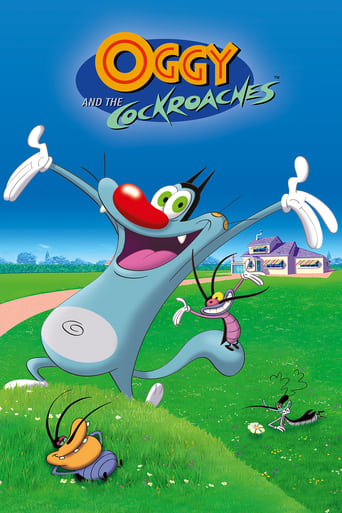
Prime Video
Oggy and the Cockroaches
Oggy, an anthropomorphic cat, would prefer to spend his days watching television and eating, but is continuously pestered by three roaches: Joey, Marky and Dee Dee. The cockroaches' slapstick mischief ranges from plundering Oggy's refrigerator to hijacking the train he just boarded. In many situations Oggy is also helped by Jack, who is more violent and short-tempered than him and is also annoyed by the cockroaches. Bob, a short-tempered bulldog, also appears in the show, and is Oggy's neighbor.
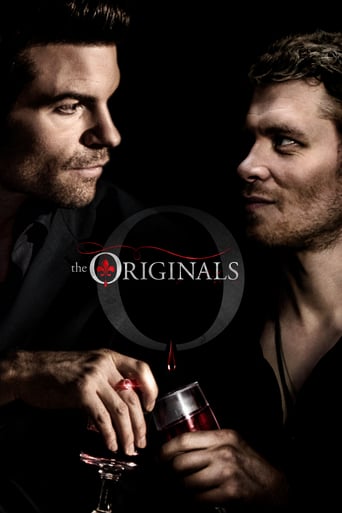
The Originals
A spin-off from The Vampire Diaries and set in New Orleans, The Originals centers on the Mikaelson siblings, otherwise known as the world's original vampires: Klaus, Elijah, and Rebekah. Now Klaus must take down his protégé, Marcel, who is now in charge of New Orleans, in order to re-take his city, as he originally built New Orleans. Klaus departed from the city after being chased down by his father Mikael, while it was being constructed and Marcel took charge. As Klaus has returned after many years, his ego has provoked him to become the king of the city. "Every King needs an heir" says Klaus, accepting the unborn child. The child is a first to be born to a hybrid and a werewolf.
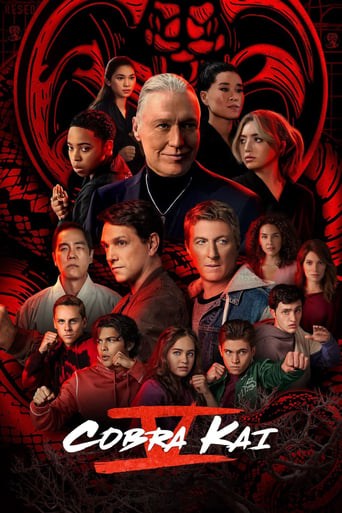
Cobra Kai
This Karate Kid sequel series picks up 30 years after the events of the 1984 All Valley Karate Tournament and finds Johnny Lawrence on the hunt for redemption by reopening the infamous Cobra Kai karate dojo. This reignites his old rivalry with the successful Daniel LaRusso, who has been working to maintain the balance in his life without mentor Mr. Miyagi.
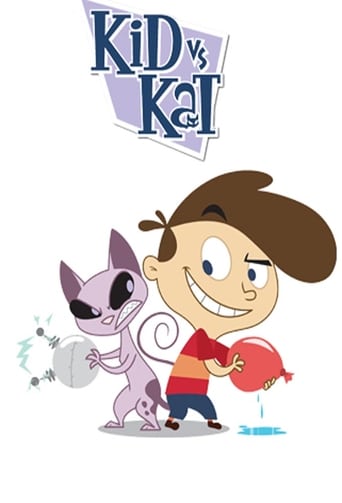
Kid vs. Kat
Kid vs. Kat is a Canadian-American animated television series developed and produced at Studio B Productions. The show was created and co-directed by Rob Boutilier. The series is distributed by Studio B Productions. The feature revolves around a 10-year-old boy's constant battle with his sister's Sphinx cat which, in reality, is a cybernetic alien.
The show premiered on YTV in Canada on October 25, 2008, aired on Disney XD in the United States on February 21, 2009, and then ended on June 4, 2011. It ran for 2 seasons, spanning 52 episodes.
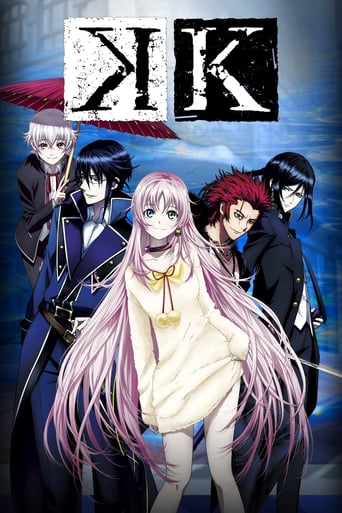
K-Project
Shiro is an easygoing teenager content with just being a student—until his seemingly perfect life is halted when a bloodthirsty clan, glowing red with fire, attempts to kill him in the streets. Unbeknownst to Shiro, he is suspected of murdering a member of their clan and will need a miracle to escape their vengeance. Miraculously, a young man named Kurou Yatogami swings in and aids Shiro in his getaway, only to reveal he's also after Shiro's life. Now a hunted man, Shiro will have to evade the clans of seven powerful kings and desperately try to prove his innocence—before it’s too late!
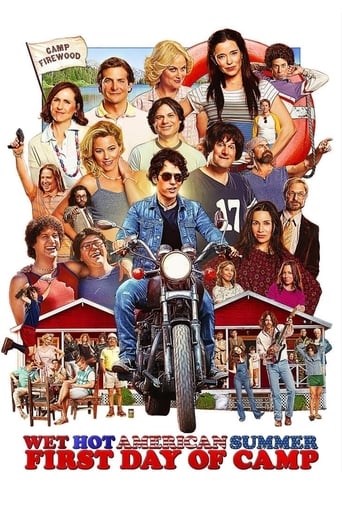
Wet Hot American Summer: First Day of Camp
It's the first day of camp in this outrageous prequel to the hilarious 2001 cult classic movie. And at Camp Firewood, anything can happen.
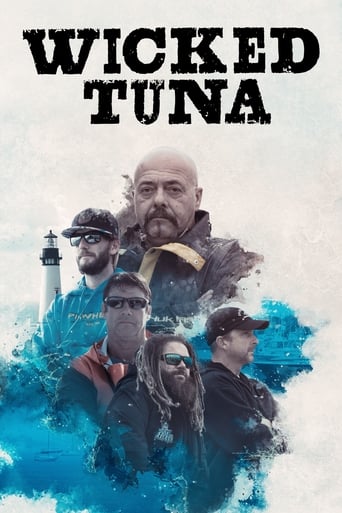
Prime Video
Wicked Tuna
Fishing is a hard life, and harder with bluefin stocks depleted. In Gloucester, Massachusetts, there's a special breed of fishermen. For generations they've used rod and reel to catch the elusive bluefin tuna. They depend on these fish for their livelihood, and the competition is brutal. Over the next 10 weeks, the most skilled fishermen will set out in the frigid waters of the North Atlantic in hopes of catching the valuable bluefin tuna. When one bluefin can bring in as much as $20,000—they'll do whatever it takes to hook up.
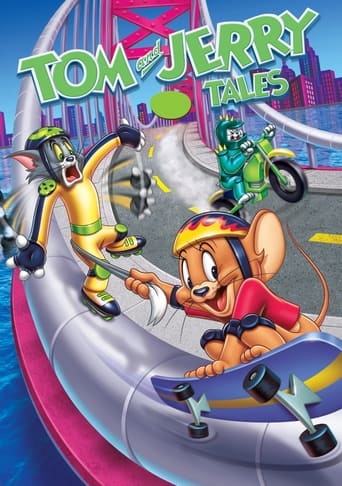
Tom and Jerry Tales
Tom and Jerry Tales is an American animated television series featuring the cat-and-mouse duo Tom and Jerry.

The Tom and Jerry Show
The iconic cat and mouse rivals are back in a fresh take on the classic series. Preserving the look, characters and sensibility of the original, this series shines a brightly colored, high-definition lens on the madcap slapstick and never-ending battle that has made Tom and Jerry two of the most beloved characters of all time.
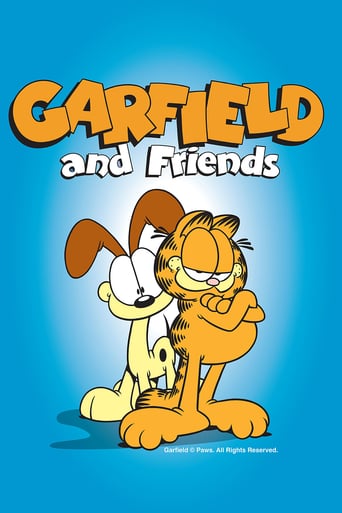
Garfield and Friends
The animated stories of Garfield the cat, Odie the dog, their owner Jon and the trouble they get into. And also Orson the Pig and his adventures on a farm with his fellow farm animals.
Related
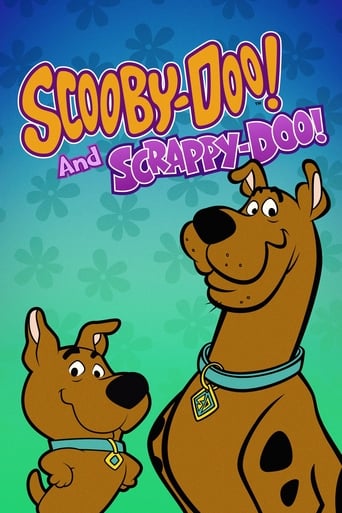
Scooby-Doo and Scrappy-Doo
The original thirty-minute version of Scooby-Doo and Scrappy-Doo constitutes the fourth incarnation of the Hanna-Barbera Saturday morning cartoon Scooby-Doo. It premiered on September 22, 1979 and ran for one season on ABC as a half-hour program. A total of sixteen episodes were produced. It was the last Hanna-Barbera cartoon series to use the studio's laugh track. Cartoon Network's classic channel Boomerang reruns the series.

K. Street Pali Hill
K. Street Pali Hill is an Indian Thriller soap that aired on STAR Plus. It replaced the highly popular thriller Kaahin Kissii Roz when it concluded in 2004. K. Street Pali Hill was successful for about a year, only to plummet in popularity, owing to many of the actors' replacements. This show pointed many similarities with DD National popular daily soap Shanti
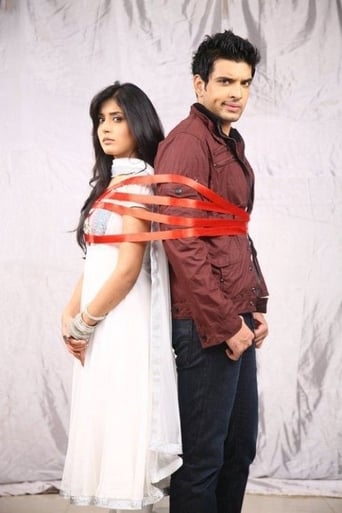
Kitani Mohabbat Hai
Kitani Mohobbat Hai is an Indian soap opera which aired on NDTV Imagine from January 19, 2009 until its end on September 25, 2009. Kitani Mohabbat Hai Season 2 started airing on 1 November 2010. Season 2 is not a continuation; it stars the same leads in a different story.

The Pink Panther Show
The Pink Panther Show is a showcase of cartoon shorts produced by David H. DePatie and Friz Freleng between 1969 and 1979, starring the animated Pink Panther character from the opening credits of the live-action films. The series was produced by Mirisch Films and DePatie-Freleng Enterprises, and was broadcast on two American television networks: from September 6, 1969 — September 2, 1978 on NBC; and from September 9, 1978 — September 1, 1980 on ABC.
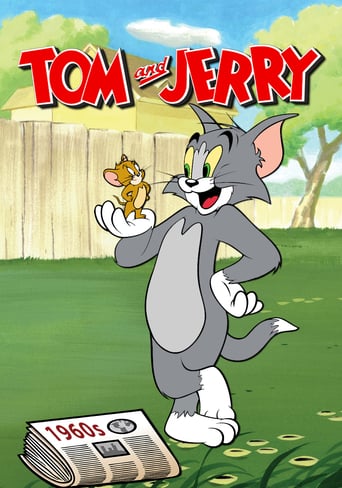
The Tom and Jerry Show
The New Tom & Jerry Show is an animated television series produced for Saturday mornings by Hanna-Barbera Productions in association with Metro-Goldwyn-Mayer Television in 1975 for ABC based on the theatrical shorts and characters Tom and Jerry.
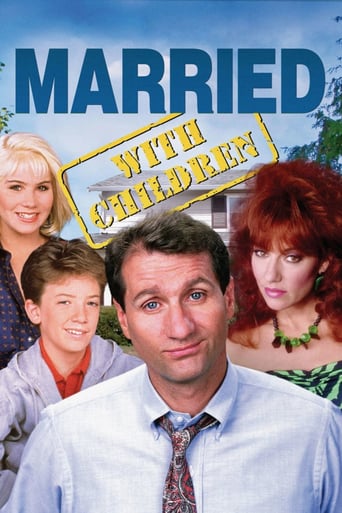
Prime Video
Married... with Children
Al Bundy is an unsuccessful middle aged shoe salesman with a miserable life and an equally dysfunctional family. He hates his job, his wife is lazy, his son is dysfunctional (especially with women), and his daughter is dim-witted and promiscuous.

Dexter's Laboratory
Dexter, a boy-genius with a secret laboratory, constantly battles his sister Dee Dee, who always gains access despite his best efforts to keep her out, as well as his arch-rival and neighbor, Mandark.
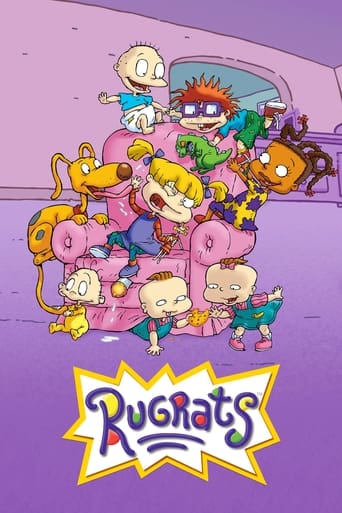
Rugrats
Focuses on a group of toddlers, most prominently Tommy, Chuckie, Phil, Lil, and Angelica, and their day-to-day lives, usually involving common life experiences that become adventures in the babies' imaginations. Adults in the series are almost always unaware of what the children are up to; however, this only provides more room for the babies to explore and discover their surroundings.
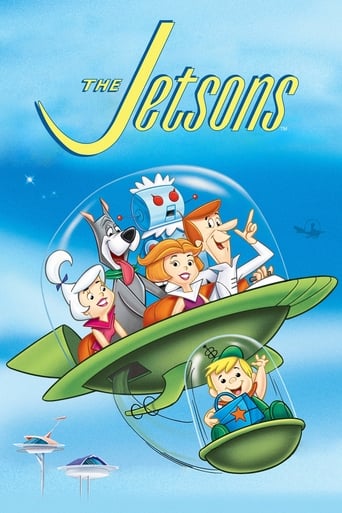
The Jetsons
Meet George Jetson and his quirky family: wife Jane, son Elroy and daughter Judy. Living in the automated, push-button world of the future hasn't made life any easier for the harried husband and father, who gets into one comical misadventure after another!

Pinky and the Brain
Pinky and Brain are genetically enhanced laboratory mice who reside in a cage in the Acme Labs research facility. Brain is self-centered and scheming; Pinky is good-natured but feebleminded. In each episode, Brain devises a new plan to take over the world, which ultimately ends in failure, usually due to Pinky's idiocy, the impossibility of Brain's plan, Brain's own arrogance, or just circumstances beyond their control.
Top Streaming TV Show
#1

Ikaw
November. 12,2021
5.9
#2
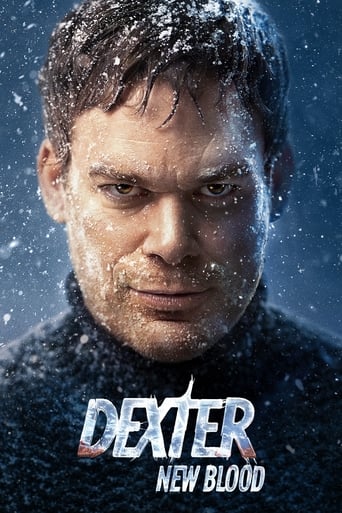
Dexter: New Blood
November. 07,2021
8.1
#3
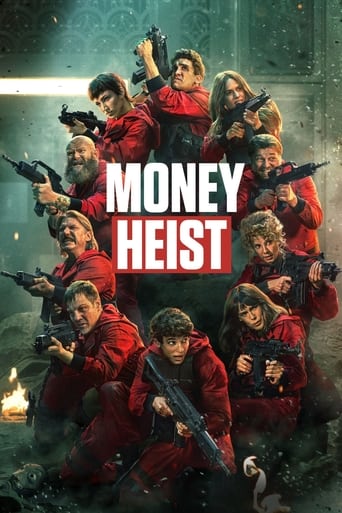
Money Heist
May. 02,2017
8.4
#4

Chicago Fire
October. 10,2012
8
#5
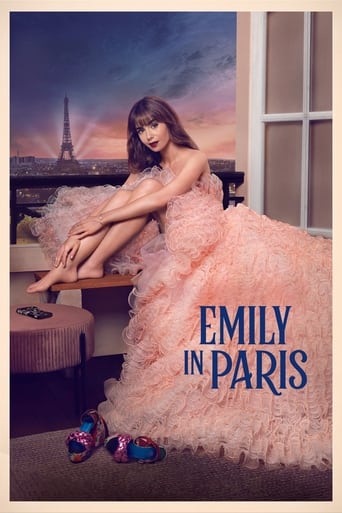
Emily in Paris
October. 02,2020
6.9
#6
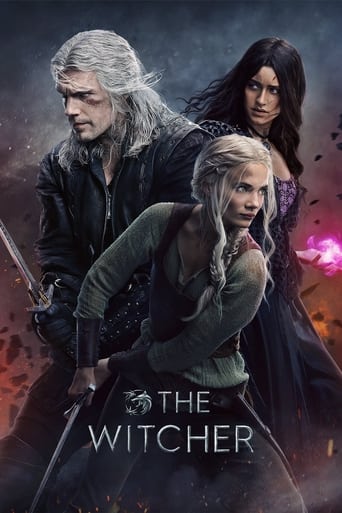
The Witcher
December. 20,2019
8
#7

Yellowstone
June. 20,2018
8.7
#8
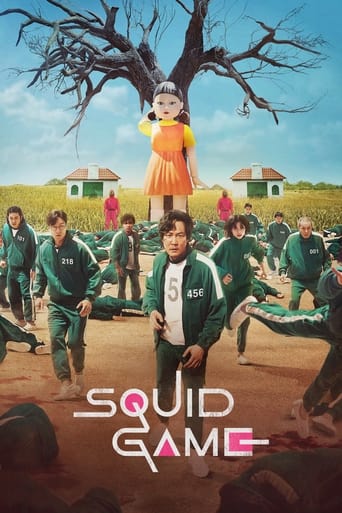
Squid Game
September. 17,2021
8
#9
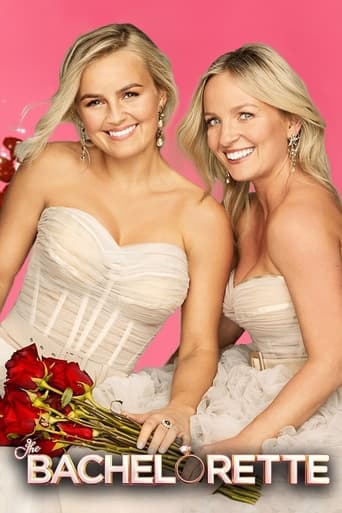
The Bachelorette
September. 23,2015
5.3
#10
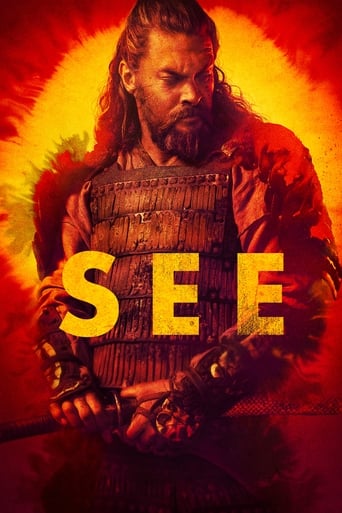
See
November. 01,2019
7.6

